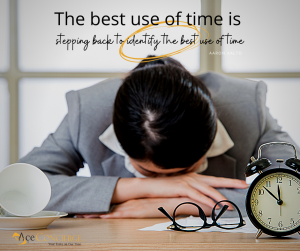How we work, where we work, and when we work have been focal points of many employee satisfaction conversations for quite some time. Employers have been reimagining and reassessing work models. Employees have been taking a closer look at how their professional and personal lives intersect.
And now, while the workplace continues to be under a microscope and in a constant state of analysis, I believe employers and employees have invaluable opportunities to learn from each other—and lean on one another. Our ongoing conversations about work can be enriched with insights gleaned from workplace studies. Sometimes, study findings show that the state of the workplace is heading in the right direction. Other times, what we see calls for pause and, more importantly, attention.
Aflac’s latest survey of employers and employees yielded one particularly sobering stat: Only 48% of American employees believe their employers care about their well-being. Of the employees who say they believe their employers don’t care about their well-being, 60% are at least somewhat likely to look for a new job in the next 12 months. Equally concerning is what the survey reveals about employee burnout: 57% of employees are experiencing at least moderate levels of burnout. The most significant culprit? Workplace stress, due primarily to “a heavy workload.”
It’s difficult to attribute employee burnout to any one cause. For many employees, there may be a blurred line between the stress employees feel at work and at home. Personal and professional obligations, paired with financial pressure, can easily escalate stress and lead to burnout. If an employee is stressed at work, it carries over into their personal lives, and vice versa. According to our survey, Gen Z and millennials are hit particularly hard with workplace burnout. Given that these generations make up roughly half of the nation’s workforce, this could explain why there is a growing notion that employers don’t care about their workers.
Employers, meanwhile, have been caught in a rapid vortex of change. Consider that in 2021, our research showed that 60% of employees believed their company did care about them, a 12% difference compared to 2023. A key theme that often comes through in our surveys of employers and employees is a gap between employers’ perceptions and employees’ lived experiences. For example, employers tend to overestimate employees’ satisfaction with, and understanding of, their benefits packages. That said, this situation presents an opportunity for employers to improve employee well-being—and make themselves the employer of choice—by refocusing on the whole employee and various aspects of wellness: emotional, physical, and financial.
Healthy work environments are anchored in openness and vulnerability, fostering an active, two-way conversation on mental health and well-being. This teaches both employers and employees how to stay ahead of workplace stress that signals burnout is around the corner. Employers can advocate for their employees by offering benefits that include mental- and financial-health tools and resources, in addition to work-life-balance perks, such as flexible work schedules, if possible. And employers who lead by example and model healthy wellness habits will positively impact the way they show up for their employees.
Fortunately, most employees feel comfortable turning to individuals at work—primarily their managers—to talk about mental health struggles and ask for help, according to our survey. This is encouraging and reinforces the value of trust between employees and their supervisors.
Well-being should be at the heart of the workplace, no matter how large or small the employer. Employees who feel cared for have a stronger relationship with work. Employers who prioritize mental health and well-being—and hold themselves accountable by connecting it to their business outcomes—may see a boost in productivity, job satisfaction, retention, and the bottom line.
(18)
Report Post







